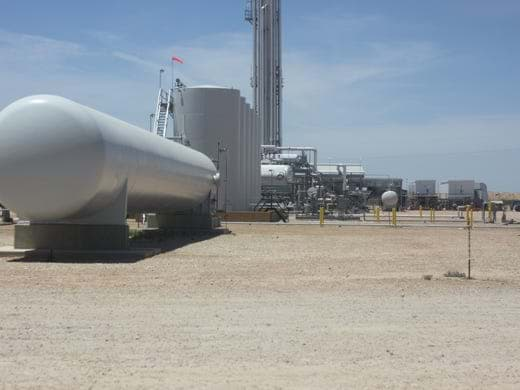Longest Permian Oil and Gas Pipeline Completed as Prices Stagnate
Drilling of the longest horizontal
oil and gas well in the history of the Permian Basin was completed as oil
production in the basin continued to center around shale in southeast New
Mexico and West Texas.
Basic Energy Services announced the well was completed in the Wolfcamp, a shale of the Delaware
Basin, which
sits below most of Eddy County and the southern half of Lea County, records
show, while also encompassing portions of Culberson, Reeves and Loving counties
in Texas.
The job was completed for
Houston-based Surge Energy, and frac plugs were drilled out to about 17,935
feet or about 3.4 miles.
The rig, a 600-horsepower well
servicing unit was coupled with Basin’s twin 2,250-horsepower pumps and
ancillary equipment, completing the drill out of the Medusa Unit C in about six
days.
“We are honored to partner with an
innovative E&P (exploration and production) company like Surge to deliver
these record-setting results,” said Brandon McGuire, vice president of Basic’s
Permian operations. “Reaching this milestone with our customer displays our
leadership in well servicing for complex, long lateral completions in the
Permian Basin.”
McGuire said Basic intends to
continue working with operators in the Delaware Basin, as the Wolfcamp Shale
recently saw the discovery of potentially the largest continuing oil and gas
resource ever found in the U.S.
“This success is a credit to our
hard-working employees and Surge’s confidence in those crews. We will continue
to focus on driving value through the integration of these high-spec pieces of
equipment into a seamless package of services,” he said.
“We are proud to be a part of the
outstanding team that made this possible and we will continue to strive to
deliver high quality services to help our customers reach their goals.”
The U.S. Geological Survey said it
found 46.3 billion barrels of oil, 281 trillion cubic feet of natural gas, and
20 billion barrels of natural gas liquids, beneath the region.
Surge President and Chief Executive
Officer Dexter Burleigh said the Permian Basin proved lucrative to pipeline
development.
The Surge pipeline was first
announced in April, and was completed in 18 days, expected to go into service
by the end of 2019.
“This industry milestone in the Permian Basin is our latest example of the innovation and technical expertise being executed by the
Surge energy team,” Burleigh said. “We are extremely
proud of our drilling team for this significant achievement.”
Oil prices stagnant despite global tensions
Despite continued infrastructure
production throughout the domestic energy industry, the price of domestic oil
remained flat from last week.
Data from NASDAQ showed West Texas
Intermediate (WTI) – a grade of crude used as a benchmark for domestic pricing
– trading at about $56 per barrel, up from about $55 last week, but still
marking a dramatic decline from about $61 at the beginning of the month.
Prices still showed improvement from
the start of the year, which began at about $45 per barrel in January, and
peaked at about $66 in April.
The slow growth in oil prices was
credited with growing supplies across the world outpacing demand, read a report
from Drillinginfo, despite the predicted extension of supply cuts from
countries in the Organization of Petroleum Exporting Countries (OPEC).
“The build in global stockpiles
during the first half of 2019 brought concerns that a possible supply glut
could arise in 2020 regardless of the efforts of OPEC+ to limit supplies,” read
the report.
U.S. prices could be supported by
continued unrest in the Middle East, which tensions growing between Iran and
U.S. allies.
Iran redirected a British tanker last
week from the Strait of Hormuz to an island off the Iranian coast, which
temporarily boosted the value of domestic oil.
“As expected, this action brought a
bid to the crude market going into the close, but by late afternoon, most of
those gains fell off,” the report read. “With the geopolitical unrest and Iran
pushing events to potential limits with the West, the market may be headed
toward a potentially volatile period.”
The report expected prices to grow to
about $60 or $63 per barrel, but without a direct conflict with Iran, the
country could find sellers, despite the growing potential of sanctions from the
U.S. and its allies.
“Continued meddling with UK vessels
will likely push the UK toward the US position with regards to the sanctions,”
the report read.
“It is obvious that the Strait of Hormuz will find escorts for tankers in the coming weeks, which sets up the potential for mistakes to be made by one or more of the participants, which could cause additional issues.”
